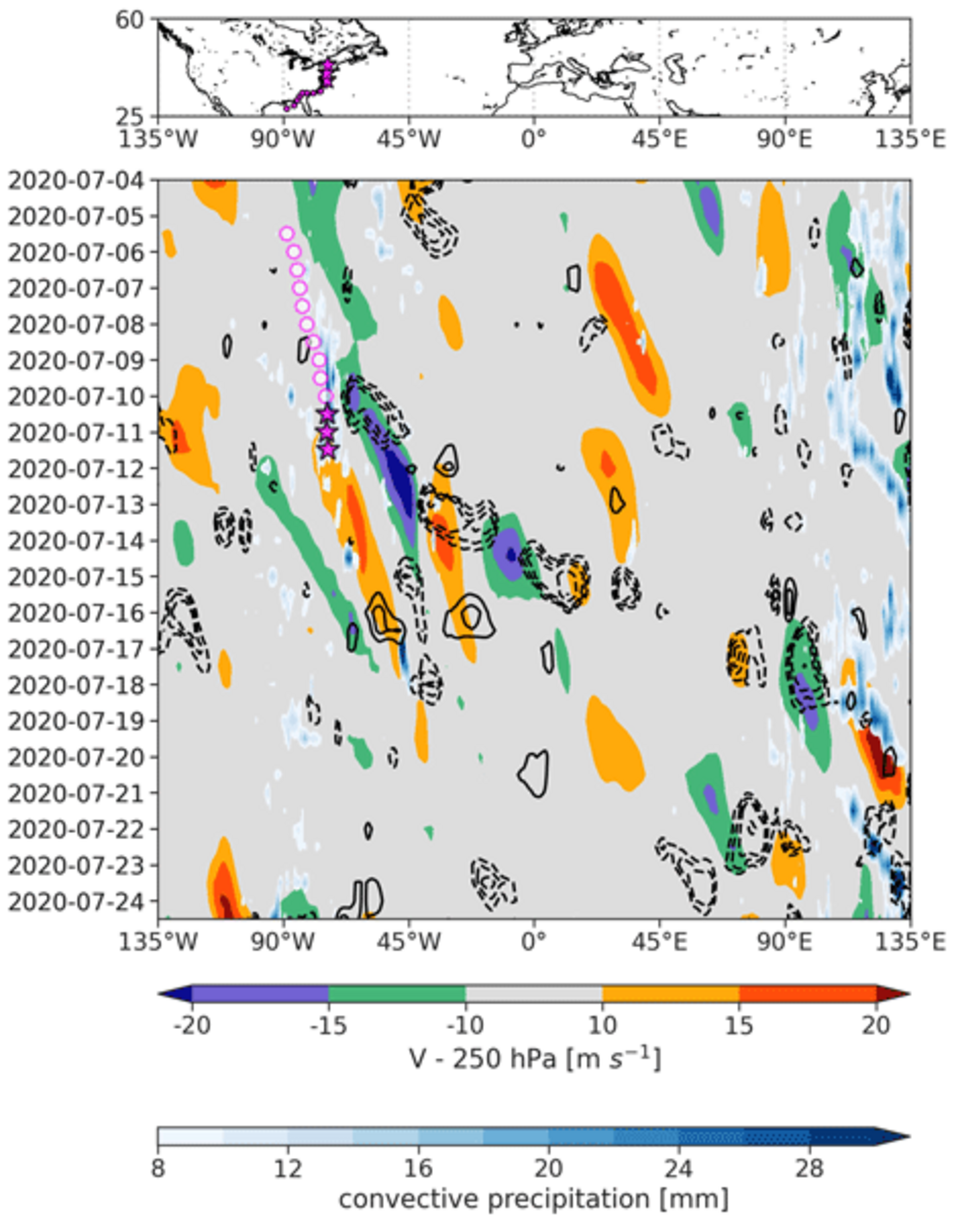Viennese meteorologists are investigating the links between dynamical scenarios and particularly high impact of Aeolus wind observations on numerical weather prediction (NWP) forecasts. In this study, they illustrate three examples of atmospheric phenomena that constitute dynamical scenarios for significant forecast error reduction through the assimilation of Aeolus: the phase shift of large-scale tropical circulation systems, namely the Quasi-Biennial Oscillation (QBO) and the El Niño–Southern Oscillation (ENSO), and the interaction of tropical cyclones undergoing extratropical transition (ET) with the midlatitude waveguide. Prof. Dr. Heini Wernli at the ETH Zürich comments on it:
Numerical weather prediction depends essentially on high-quality upper-air wind observations to constrain the initial conditions. This study by Martin et al. 2023 investigates the impact of spaceborne Doppler wind lidar measurements from the Aeolus mission on forecast quality of the operational global forecasting system with ICON at Deutscher Wetterdienst. An observing system experiment shows an overall beneficial impact, and the authors go one important step further and present illustrative examples how events with strong forecast quality improvements can be related to specific dynamical phenomena such as ENSO and the extratropical transition of tropical cyclones.
Martin, A., Weissmann, M., and Cress, A.: Investigation of links between dynamical scenarios and particularly high impact of Aeolus on numerical weather prediction (NWP) forecasts, Weather Clim. Dynam., 4, 249–264, doi.org/10.5194/wcd-4-249-2023, 2023.
Univ.-Prof. Mag. Dr. Martin Weißmann
Institut für Meteorologie und Geophysik
Universität Wien
1090 - Wien, Althanstraße 14 (UZA II)
+43-1-4277-53710

